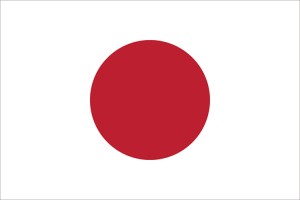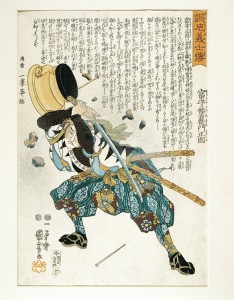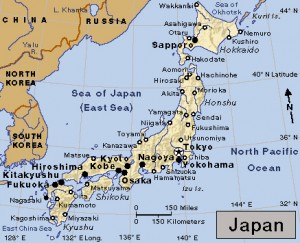Language Monday: Japanese
Monday, May 21st, 2018May 21, 2018
Japanese is the native language of Japan and the neighboring Ryukyu and Bonin islands. In Japanese, the language is called Nihongo (日本語). Hyojungo is the name of the standard form of the language and the dialect of the Japanese capital, Tokyo. Hyojungo is generally understood despite widely varying regional dialects. There are 127 million native speakers of Japanese. More than 100,000 people speak it as a second language. There are also large Japanese-speaking communities in such countries as Australia, Brazil, and the United States.

The common name for the flag of Japan is Hinomaru, which means sun disc in Japanese. Credit: © T. Lesia, Shutterstock
The oldest written account of Japanese, the Kojiki (Record of Ancient Matters), dates from A.D. 712, and it is written using Chinese characters called kanji. The dialect of the Kojiki originated with the aristocracy in western Honshu, Japan’s central and largest island. The dialect was spoken in the imperial capital of Kyoto, and it transferred to Tokyo when that city became Japan’s capital in 1868.
Japanese is traditionally written vertically and from right to left. It is now also written horizontally. The complex writing system uses the established kanji characters plus syllable characters called hiragana and katakana and a Romanized script called romaji. Grammatically, Japanese follows a subject-object-verb order. There are 5 vowels and 16 consonants. Japanese nouns have no gender or number. Nouns are followed by postpositionals, which indicate the grammatical function of the noun.

Japanese characters on this print recount an episode of the 47 Ronin, a group of Japanese warriors in the early 1700′s. Credit: Wood-block print by Utagawa Kuniyoshi (1847); Museum of Fine Arts, Boston (DeAgostini/SuperStock)
Japanese has many onomatopoeic words (words that sound like what they describe) and words that imitate motion. Repeating a word indicates a repetition or continuation of the action. For example, pyon means with a hop, and pyon-pyon means hop-hop.
Japanese is spoken differently based on the social situation. Intimate Japanese is for everyday conversation with family, friends, and co-workers. Polite is for well-educated company and strangers. Honorific is to show honor and respect to elders and superiors. Impersonal is for speeches and writing.
Japanese has been a literary language for many centuries. Women wrote many medieval poetry and prose pieces, including a classic of Japanese literature, The Tale of Genji by Lady Murasaki Shikibu.
Chinese loanwords, called kango, make up about half the Japanese vocabulary. Gairaigo (foreign words) come mostly from European languages. From Dutch, Japanese gets the words kohi (coffee), biiru (beer), and penki (paint). Since the mid-1800′s, most loanwords have come from English, including teburu (table), wapuro (word processor), and rampu (lamp).



